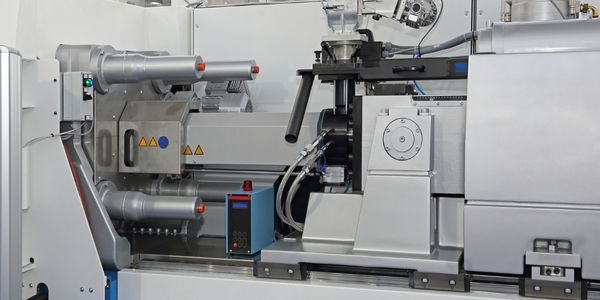Download PDF
Customer Case Study: Merley Paper Converters' ERP Implementation
Technology Category
- Functional Applications - Enterprise Resource Planning Systems (ERP)
Applicable Functions
- Business Operation
- Warehouse & Inventory Management
Use Cases
- Inventory Management
- Warehouse Automation
- Manufacturing System Automation
Services
- System Integration
- Software Design & Engineering Services
The Challenge
In 2001, as business peaked, Merley were keen on ramping up production and improving their manufacturing processes. But to forge ahead in a highly competitive market, they knew they had to upgrade their current standalone systems, and transfer vast amounts of data from their old systems to a new one, without losing data or bringing manufacturing to a halt, risking costly production hours, and causing late deliveries. After a lengthy market evaluation, Merley chose to partner with Medatech UK. Priority's authorized business partner, to replace their legacy software, and implement Priority ERP. 'For Merley, Priority was quickly deemed a perfect fit because of its strong focus on an organization's internal processes,' said Allan Dyson, owner, Merley Paper Converters.
About The Customer
If you've ever been handed a receipt for goods or services in the UK, chances are, it was a Merley-produced Promeroll receipt, the country's #1 printed receipt for goods and services. Founded in 1983, Merley Paper Converters is the UK's largest independent manufacturer of receipt paper rolls for marketing and security receipts. With a state-of-the-art design and manufacturing facility in Corby, Merley serve hundreds of the UK's independent and multiple retailers, that combined to more than 3 billion customer transactions per year, all using Merley's patented Promeroll receipts.
The Solution
The solution involved implementing Priority ERP, which included native support for complete inventory management, dynamic replenishment, warehouse management, production planning and costing, and financial accounting. This allowed Merley to deliver products with shorter turnaround times and access real-time data on product specs, customer orders, inventory, scheduling, costs, and distribution. The implementation was straightforward, integrating all outdated standalone systems into one. Priority's intuitive interface and customizable screens made it easy for employees to learn and use the system. The ERP system was also tailored to meet Merley's needs, streamlining production planning and scheduling, and proving to be a robust and reliable manufacturing tool.
Operational Impact
Quantitative Benefit
Related Case Studies.

Case Study
Plastic Spoons Case study: Injection Moulding
In order to meet customer expectations by supplying a wide variety of packaging units, from 36 to 1000 spoons per package, a new production and packaging line needed to be built. DeSter wanted to achieve higher production capacity, lower cycle time and a high degree of operator friendliness with this new production line.

Case Study
Robot Saves Money and Time for US Custom Molding Company
Injection Technology (Itech) is a custom molder for a variety of clients that require precision plastic parts for such products as electric meter covers, dental appliance cases and spools. With 95 employees operating 23 molding machines in a 30,000 square foot plant, Itech wanted to reduce man hours and increase efficiency.

Case Study
Fully Automated Visual Inspection System
Tofflon has developed a fully automatic machine that uses light to inspect vials, medicine bottles, or infusion containers for glass fragments, aluminum particles, rubber grains, hairs, fibers, or other contaminants. It also detects damaged containers with cracks or inclusions (microscopic imperfections), automatically removing faulty or contaminated products. In order to cover all production processes for freeze-dried pharmaceuticals, Tofflon needed to create an open, consistent, and module-based automation concept.

Case Study
Hospital Inventory Management
The hospital supply chain team is responsible for ensuring that the right medical supplies are readily available to clinicians when and where needed, and to do so in the most efficient manner possible. However, many of the systems and processes in use at the cancer center for supply chain management were not best suited to support these goals. Barcoding technology, a commonly used method for inventory management of medical supplies, is labor intensive, time consuming, does not provide real-time visibility into inventory levels and can be prone to error. Consequently, the lack of accurate and real-time visibility into inventory levels across multiple supply rooms in multiple hospital facilities creates additional inefficiency in the system causing over-ordering, hoarding, and wasted supplies. Other sources of waste and cost were also identified as candidates for improvement. Existing systems and processes did not provide adequate security for high-cost inventory within the hospital, which was another driver of cost. A lack of visibility into expiration dates for supplies resulted in supplies being wasted due to past expiry dates. Storage of supplies was also a key consideration given the location of the cancer center’s facilities in a dense urban setting, where space is always at a premium. In order to address the challenges outlined above, the hospital sought a solution that would provide real-time inventory information with high levels of accuracy, reduce the level of manual effort required and enable data driven decision making to ensure that the right supplies were readily available to clinicians in the right location at the right time.

Case Study
IoT Solution for Cold Chain
Most of the customer's warehouses run on utility and generator power. Since these warehouses are in remote locations, power outages are a very common scenario. Diesel fuel, thereby, becomes a significant cost for these warehouses. Energy consumption was also very high due to the lack of a consistent temperature throughout the facility. This lack of a consistent temperature in all areas and no way to control it, resulted in the customer losing a significant amount of their temperature sensitive goods due to spoilage.





